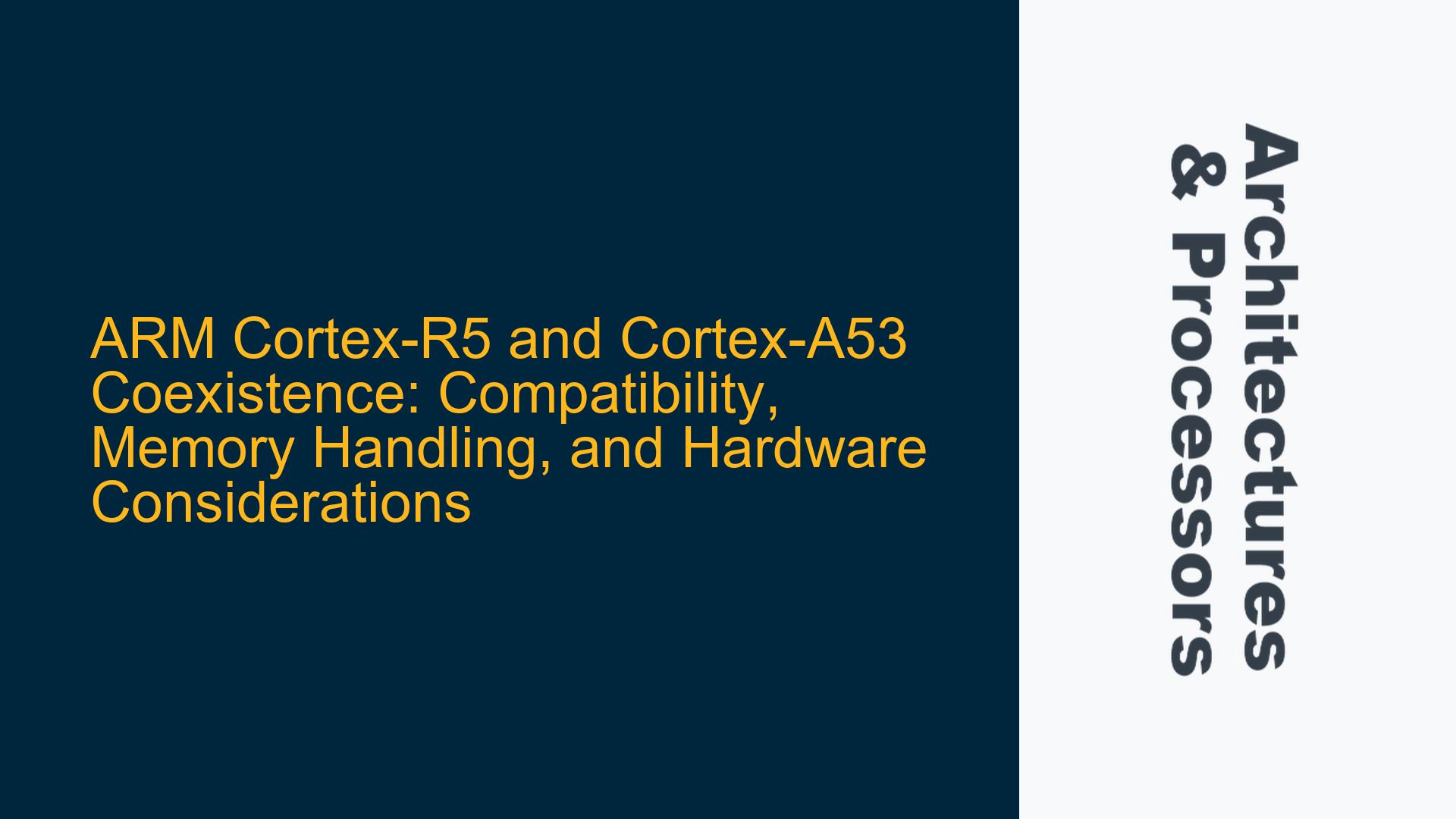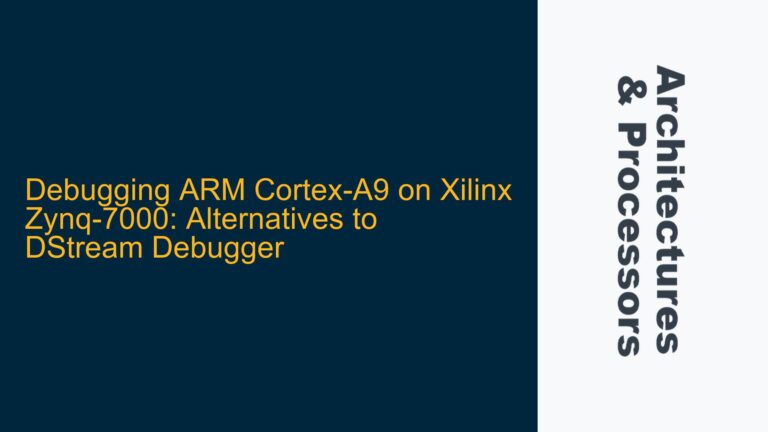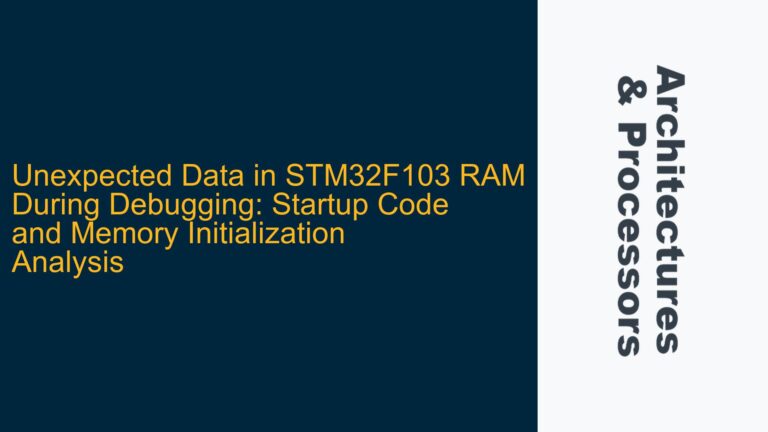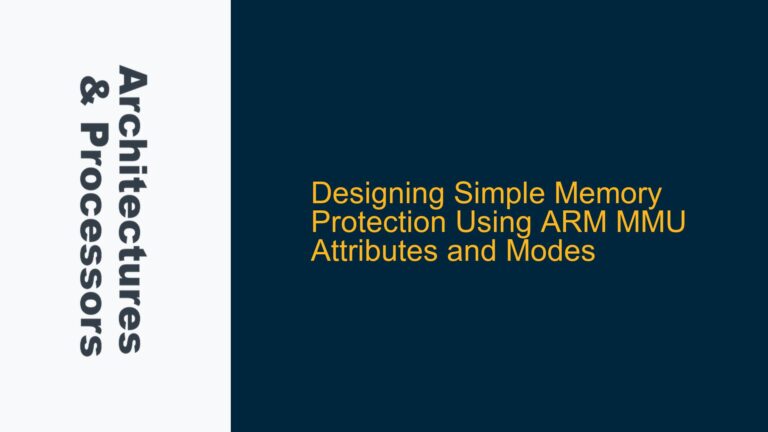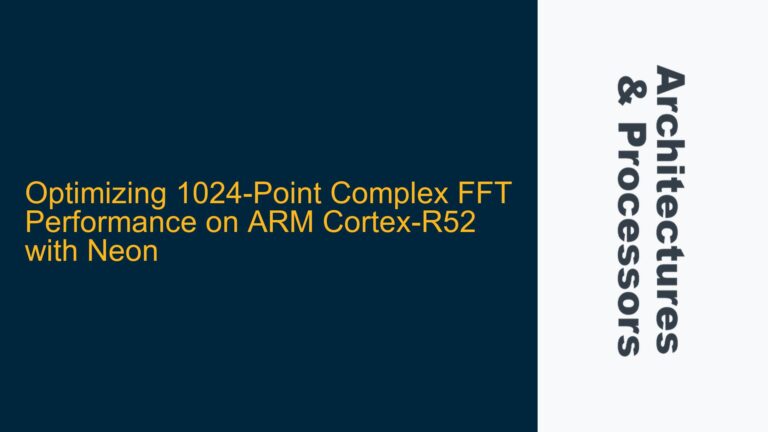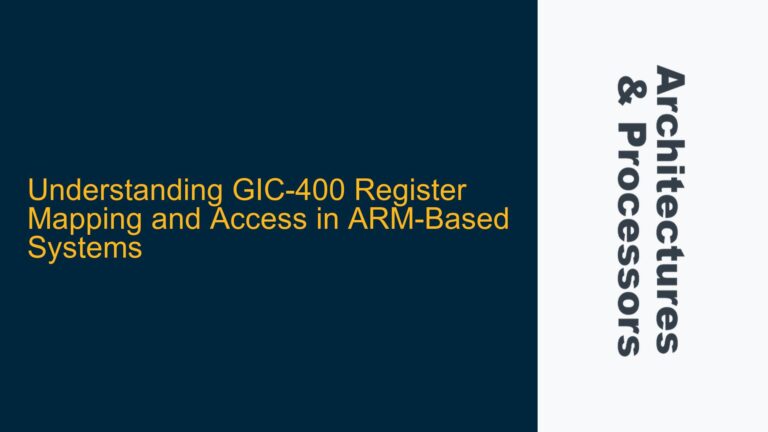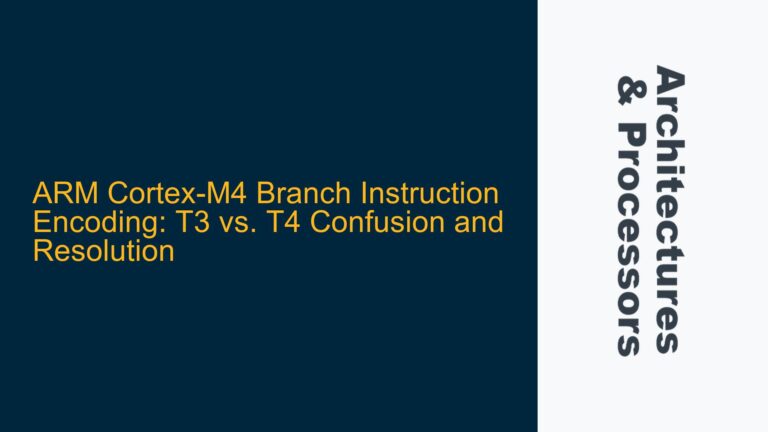ARM Cortex-R5 and Cortex-A53 Architectural Differences and Compatibility Challenges
The coexistence of ARM Cortex-R5 and Cortex-A53 cores in a single system presents several architectural and compatibility challenges. The Cortex-R5 is based on the ARMv7-R architecture, which is designed for real-time applications, while the Cortex-A53 is based on the ARMv8-A architecture, targeting general-purpose and mobile applications. These architectural differences lead to significant variations in memory handling, instruction sets, and system capabilities.
The Cortex-R5 is a 32-bit processor that supports the A32 and T32 instruction sets. It lacks a Memory Management Unit (MMU), which means it does not support virtual-to-physical memory translations. Instead, it uses a Memory Protection Unit (MPU) to enforce memory access rules. This makes the Cortex-R5 suitable for real-time systems where deterministic behavior is crucial, but it also limits its ability to run complex operating systems that rely on virtual memory.
On the other hand, the Cortex-A53 is a 64-bit processor that supports the AArch64 and AArch32 instruction sets. It includes an MMU, enabling it to run full-fledged operating systems like Linux with virtual memory support. The Cortex-A53 is optimized for performance and power efficiency, making it ideal for mobile and embedded applications where both high performance and low power consumption are required.
The architectural differences between the Cortex-R5 and Cortex-A53 mean that code written for one core type will not run natively on the other without significant modifications. For example, Cortex-R5 code written in A32 or T32 instruction sets will not execute on a Cortex-A53 core that is operating in AArch64 mode. Additionally, the lack of an MMU in the Cortex-R5 means that any code relying on virtual memory will need to be rewritten or adapted to work on the Cortex-R5.
Furthermore, the memory maps for the two cores are likely to be different, requiring adjustments to the MMU settings when porting code between the two architectures. This is particularly important when dealing with shared memory regions or when using Direct Memory Access (DMA) engines that need to access memory consistently across both cores.
Memory Handling and Instruction Set Incompatibilities Between Cortex-R5 and Cortex-A53
The memory handling and instruction set incompatibilities between the Cortex-R5 and Cortex-A53 are among the most significant challenges when attempting to run code across both core types. The Cortex-R5’s use of an MPU instead of an MMU means that it cannot support virtual memory, which is a fundamental requirement for many modern operating systems and applications. This limitation necessitates a different approach to memory management when developing software for the Cortex-R5.
In contrast, the Cortex-A53’s MMU allows it to support virtual memory, enabling the use of complex operating systems and applications that rely on memory paging and protection mechanisms. This difference in memory handling means that any code designed to run on the Cortex-A53 that relies on virtual memory will not work on the Cortex-R5 without significant modifications.
The instruction set differences further complicate the matter. The Cortex-R5 supports the A32 and T32 instruction sets, which are 32-bit instruction sets. The Cortex-A53, however, supports both AArch64 (64-bit) and AArch32 (32-bit) instruction sets. While the Cortex-A53 can execute 32-bit code in AArch32 mode, it cannot execute 32-bit code in AArch64 mode. This means that if the Cortex-A53 is configured to run in AArch64 mode, any 32-bit code written for the Cortex-R5 will not run natively on the Cortex-A53.
Additionally, the Cortex-R5 and Cortex-A53 have different memory models and cache architectures. The Cortex-R5 is designed for real-time applications where deterministic behavior is critical, and it typically has a simpler cache architecture to ensure predictable timing. The Cortex-A53, on the other hand, has a more complex cache architecture optimized for performance, which may introduce non-deterministic behavior that is unsuitable for real-time applications.
These differences in memory handling and instruction sets mean that developers must carefully consider the target architecture when writing code for systems that include both Cortex-R5 and Cortex-A53 cores. Code written for the Cortex-R5 may need to be rewritten or adapted to run on the Cortex-A53, and vice versa. This can involve significant effort, particularly when dealing with low-level system code or performance-critical applications.
Implementing Cross-Architecture Code Porting and Hardware Selection Strategies
To address the challenges of running code across both Cortex-R5 and Cortex-A53 cores, developers must adopt a strategic approach to code porting and hardware selection. This involves understanding the architectural differences between the two cores and implementing solutions that allow code to run efficiently on both architectures.
One approach is to use a common codebase that can be compiled for both architectures. This requires careful abstraction of architecture-specific code and the use of conditional compilation to ensure that the correct code is compiled for each target architecture. For example, code that relies on virtual memory can be abstracted using a memory management layer that provides a consistent interface across both architectures. On the Cortex-R5, this layer would use the MPU to enforce memory access rules, while on the Cortex-A53, it would use the MMU to manage virtual memory.
Another approach is to use a hypervisor or virtualization layer to run different operating systems or environments on each core type. This allows the Cortex-A53 to run a full-fledged operating system like Linux, while the Cortex-R5 runs a real-time operating system (RTOS) or bare-metal application. The hypervisor can manage the communication and data sharing between the two cores, ensuring that each core runs the code that is best suited to its architecture.
When selecting hardware, it is important to choose a platform that supports both Cortex-R5 and Cortex-A53 cores, or at least provides the necessary flexibility to integrate both core types. For example, some System on Chip (SoC) designs include both Cortex-R5 and Cortex-A53 cores, allowing developers to take advantage of the strengths of each architecture. Additionally, developers should consider the availability of development tools and support for the chosen hardware platform, as this can significantly impact the ease of development and debugging.
In terms of hardware selection, platforms like the SolidRun LX2160a, which features 16 Cortex-A72 cores, may not be suitable for applications that require both Cortex-R5 and Cortex-A53 cores. Instead, developers should look for platforms that offer a mix of Cortex-R and Cortex-A cores, or consider custom SoC designs that integrate both core types. It is also important to consider the performance and power requirements of the application, as these will influence the choice of hardware.
In conclusion, running code across both Cortex-R5 and Cortex-A53 cores requires a deep understanding of the architectural differences between the two cores and a strategic approach to code porting and hardware selection. By carefully abstracting architecture-specific code, using virtualization layers, and selecting the right hardware platform, developers can create systems that leverage the strengths of both Cortex-R5 and Cortex-A53 cores while minimizing compatibility issues.
